How are soldier pile walls constructed?
Soldier Pile Installation
Soldier piles are typically steel H-piles or W sections. The piles may be driven, vibrated, or drilled into place. Piles are typically driven or vibrated into the ground where soil profiles do not prevent driving and were vibrations can be tolerated by adjacent structures. On newer pile driving rigs, the input energy and frequency can be adjusted during pile driving to minimize vibration. Adjacent structures can be monitored for vibration. However, what often inhibits pile driving is noise and vibration tolerance of the building inhabitants.
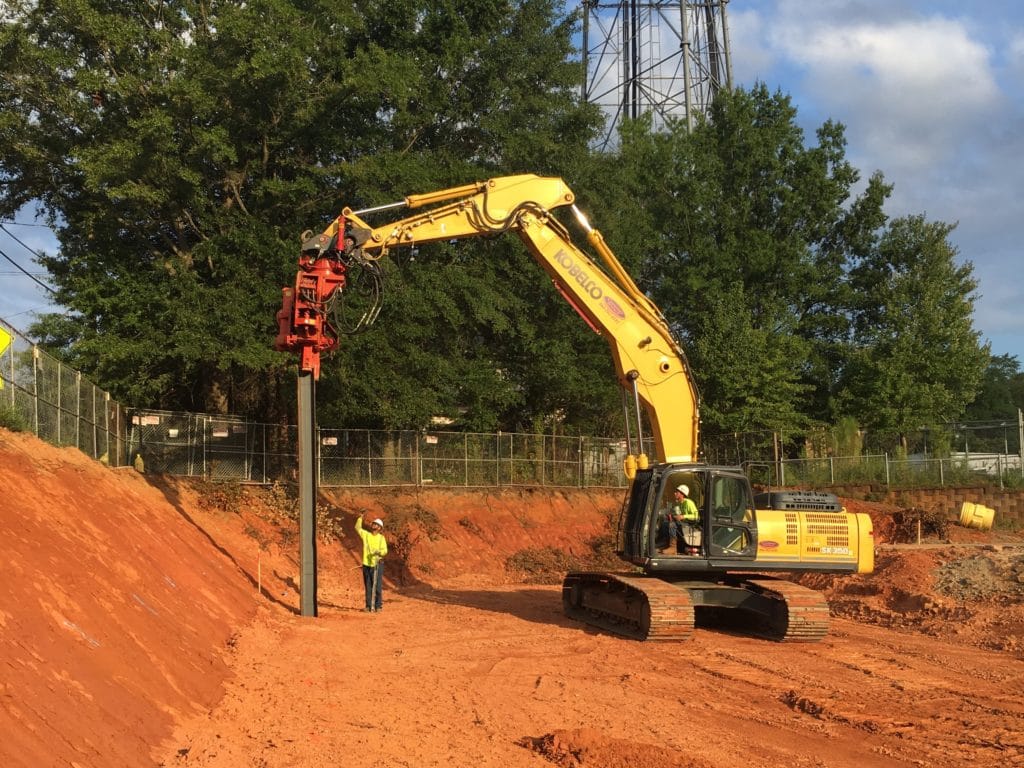
Predrilling can be done prior to driving soldier piles to achieve better horizontal alignment and plumbness. Accuracy is important when the basement wall will be formed against the shoring system.
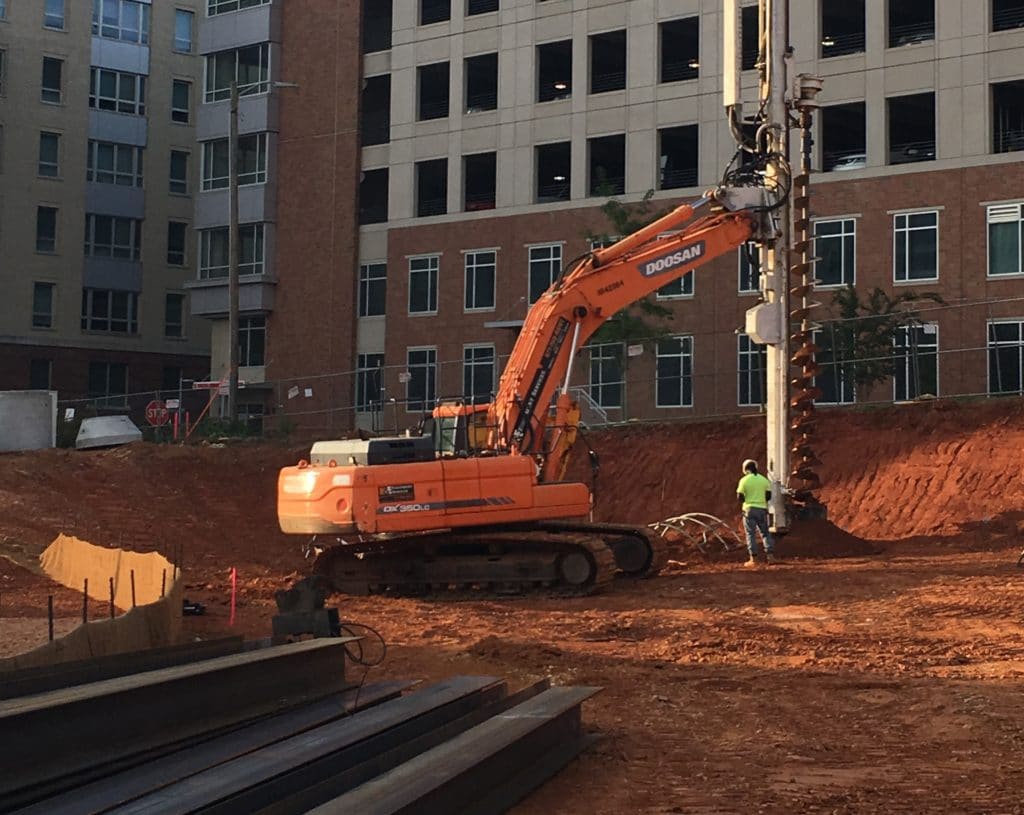
When soldier piles cannot be driven or vibrated into the ground due to soil conditions, vibration constraints, or noise restrictions, soldier piles can be set in predrilled holes and backfilled with concrete; i.e. just like setting a fence post.
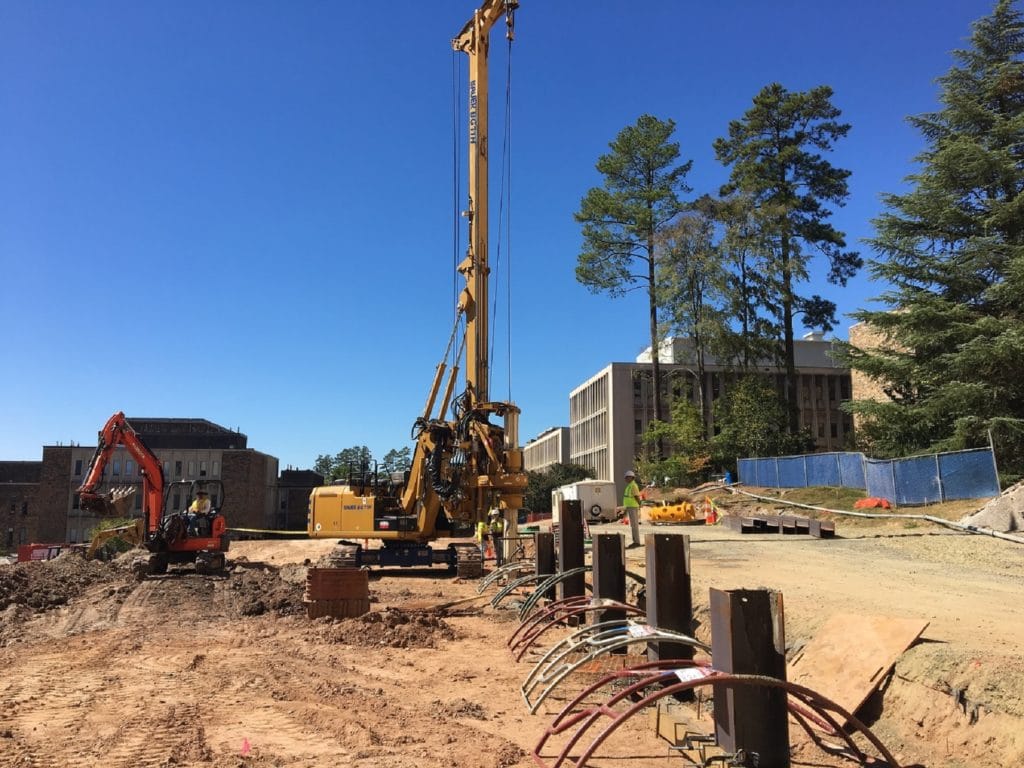
Wood Lagging
Wood lagging is installed in 5-ft lifts as the excavation progresses. I’m often asked if the boards “slide down” as the excavation progresses. Due to the pressure of the ground on the wood lagging, once installed, they will not slide down. This is especially true once the anchors have been tensioned.
Wood lagging can be installed in several different ways. Often the top 5-ft of lagging is placed on the backside of the rear flange. This does two things; it makes setting the 2nd lift faster and allows for easier access should the client require removal of the upper few feet of shoring. Wood lagging can be installed behind the front flange. This is often done in soil. Wood lagging can also be attached with threaded studs or clips to the front flange. Attaching the front face of the front flange is advantageous in hard soil/partially weathered rock that still requires lagging.
This photo shows wood lagging on the back of the rear flange on the 1st lift, on the back of the front flange on the 2nd lift, and on the face of the front flange on successive lifts.
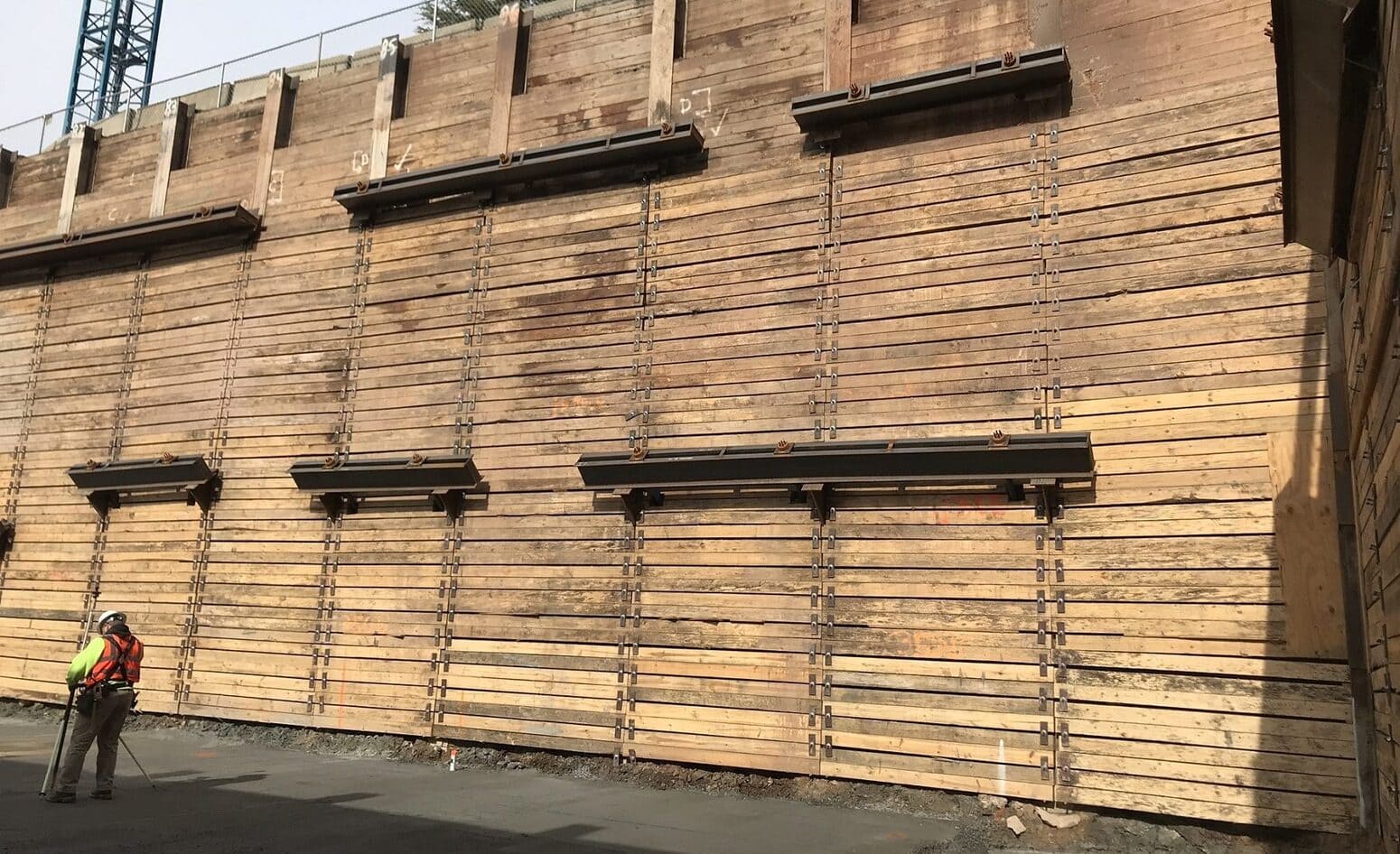
Up close photo of wood lagging attached to the face of the front flange.
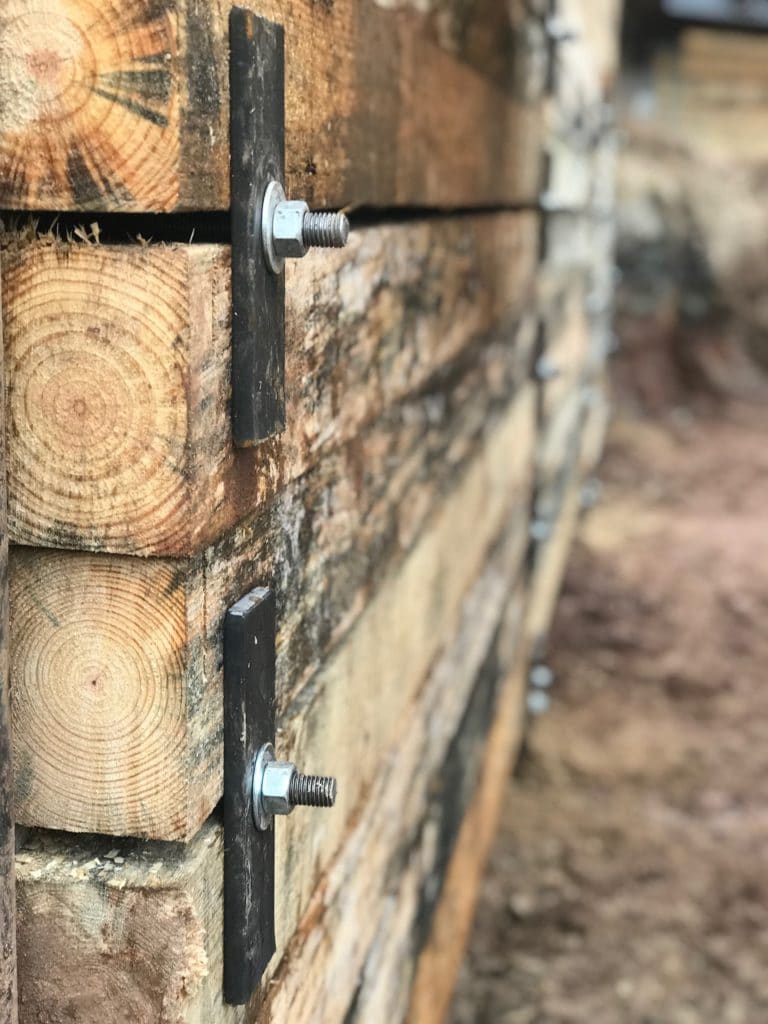
Anchor Installation
Anchors are typically installed on the 2nd lift of the soldier pile wall at a depth of 8′ to 10′. The anchors can be angled up to 45 degrees to get below existing utilities. Additional rows of anchors are installed every 10′ to 15′ feet below the 1st row of anchors. Note that while steeply angled anchors get below utilities, they increase the vertical load on the soldier piles and that adds stress in addition to the bending stress of the pile. If possible, flatter anchors are more efficient.
Anchors can be installed directly through a prefabricated hole in the pile or through a waler. The advantage of drilling directly through the pile is a lower anchor profile. We have one client that actually mandates this for safety reasons to limit the possible conflict between walers and lowering loads into the excavation. The advantage of walers is flexibility. Walers allow the anchor location to be field adjusted and is therefore very helpful when drilling near existing utilities.
Walers can be made using pairs of channels or by putting anchor strands through holes in a W section.
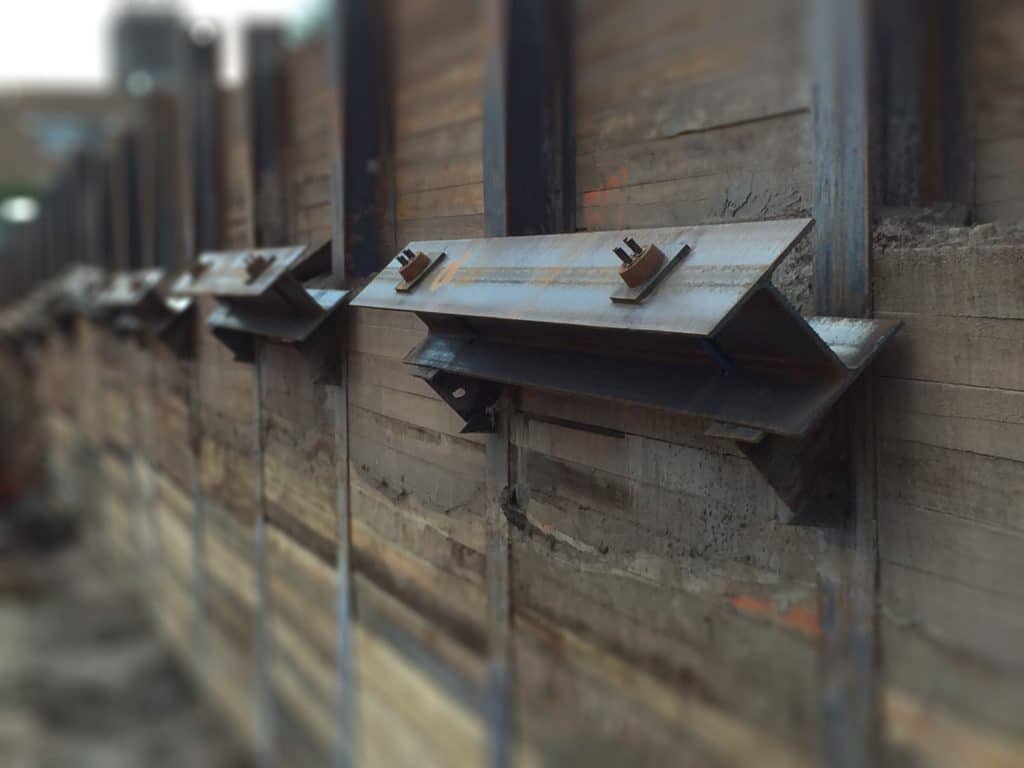
More Information
Soldier Pile Walls
FHWA Ground Anchors and Anchored Systems
DFI Anchored Earth Retention Committee
